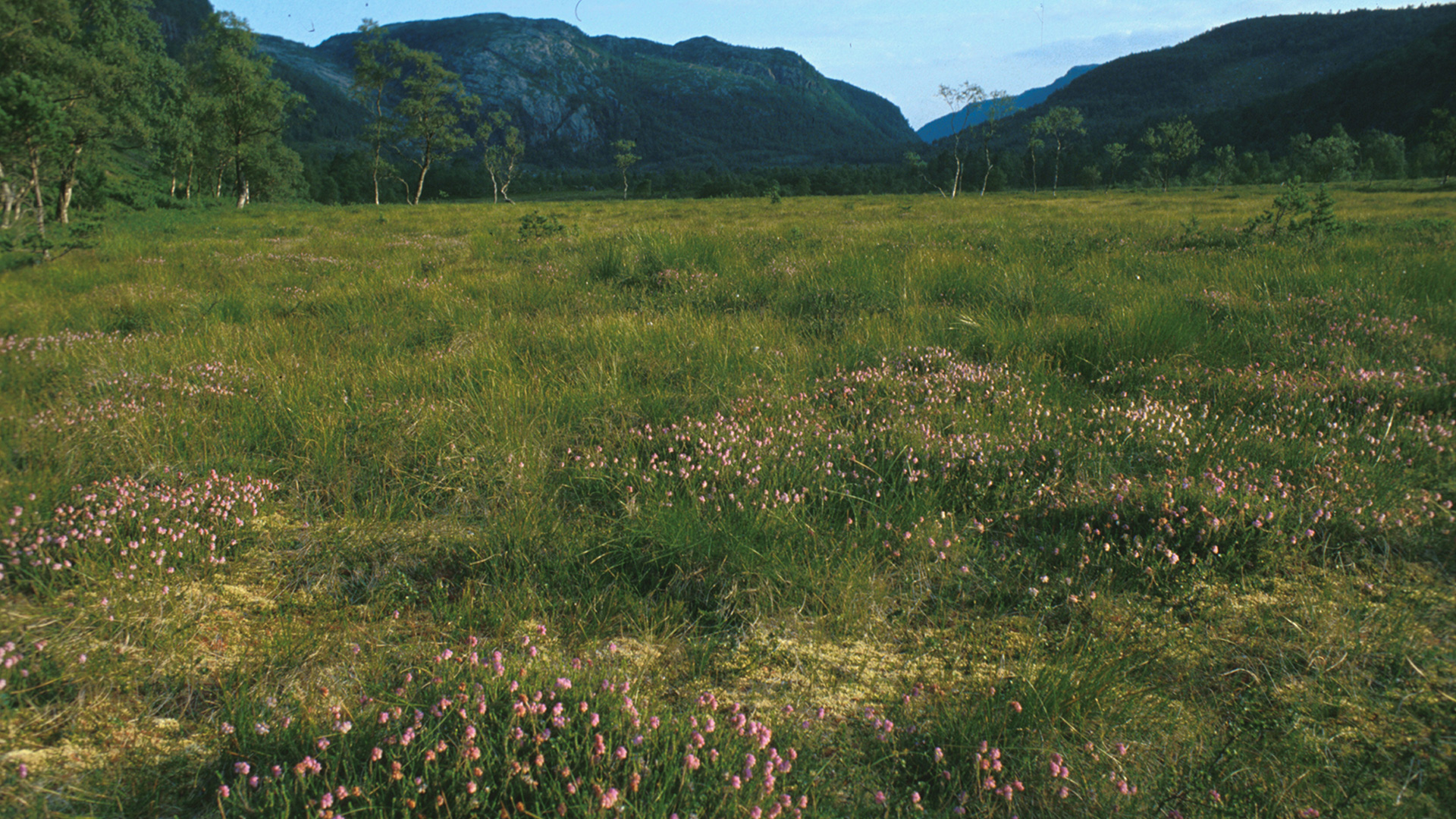
Background for protection and threats
The protection objective is to preserve a very interesting and varied marshland area, consisting of both nutrient-poor and nutrient-rich marshland vegetation. The combination of ombrotrophic marshland, nutrient-poor marshland and nutrient-rich marshland is particularly valuable. The heritage values at Øyastøl have long been threatened by the overgrowth of juniper, deciduous forest and eagle fern, as well as the planting of spruce trees. There is also some wear and tear on the tourist trail that runs through the area. For the past 10 years, Øyastøl has been actively maintained and the condition of the protected area has improved greatly.
Plant life and wildlife
The area at Øyastøl consists of a number of different types of marshland, and it is this diversity that makes the area so valuable. Large parts of the area consist of nutrient-poor marshland, but there are also elements of ombrotrophic marshland, nutrient-rich marshland, extremely nutrient-rich marshland and mineral-rich springs.

Past use of the area
Øyastøl used to be an important piece of marshland that was cut to make hay, and there were seven hay barns on and next to the marsh at the end of the 19th century. Haymaking on the marsh ceased around 1900, but the area continues to be grazed by livestock from the nearby farms at Kleivaland and Ritland.

Current use
Øyastøl is easily accessible from a forest road and a waymarked hiking trail that leads up from a parking lot at Kleivaland. A waymarked hiking trail to Melands-Grønahei tourist cabin runs through the nature reserve. As a result, the area is well used in connection with outdoor recreation. Øyastøl is also an important grazing area for sheep.

Sources and further reading
Verneforskrift på Lovdata Fylkesmannen i Rogaland 2011. Foreløpig skjøtselsplan for Øyastøl. Moen, A. 1971. Myrer og andre naturverdier som bør fredes i Hjelmeland. Stavanger turistforenings årbok 1971. Moen, A. 1975. Myrundersøkelser I Rogaland. Rapport i forbindelse med den norske myrreservatplanen. Universitetet i Trondheim.
